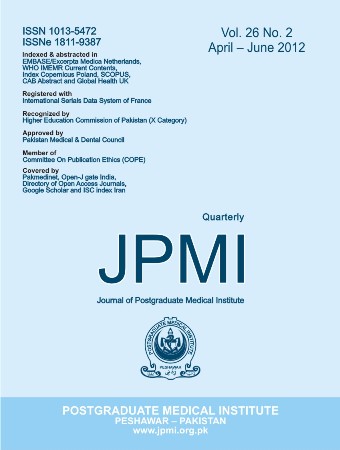ROLE OF HIGH RESOLUTION COMPUTED TOMOGRAPHIC SCAN IN DIAGNOSIS OF INTERSTITIAL LUNG DISEASES IN LOCAL POPULATION
Main Article Content
Abstract
Objective: The objective of this study was to find the role of High Resolution Computed Topographic(HRCT) scan of the chest in the diagnosis of Interstitial Lung Diseases (ILD) in our local population.
Methodology: A prospective study of fifty patients already diagnosed as ILD on transbronchial or openlung biopsy was performed in the Medical B Unit of the Department of Medicine Khyber TeachingHospital, Peshawar from January, 2008 to December, 2008. Both male and female admitted patients above15 years of age were included in this study.
Results: Of the fifty patients meeting the inclusive criteria 18 were male and 32 were female. Thecommonest affected age was 40-60 years. The commonest symptoms were shortness of breath and coughrespectively. Inspiratory crepts and wheezes were the most common physical findings followed by clubbing,raised jugular venous pressure and edema feet. HRCT Scan revealed ILD in 88% with sensitivity of 95%and specificity of 75% having 95% positive predictive value and 75% negative predictive value.
Conclusion: HRCT Scan of chest is the most sensitive non invasive test in the diagnosis of ILD comparedto chest X ray, pulomary fuction tests and can abate the need of lung biopsy in many cases.
Article Details
Work published in JPMI is licensed under a
Creative Commons Attribution-NonCommercial 2.0 Generic License.
Authors are permitted and encouraged to post their work online (e.g., in institutional repositories or on their website) prior to and during the submission process, as it can lead to productive exchanges, as well as earlier and greater citation of published work.


